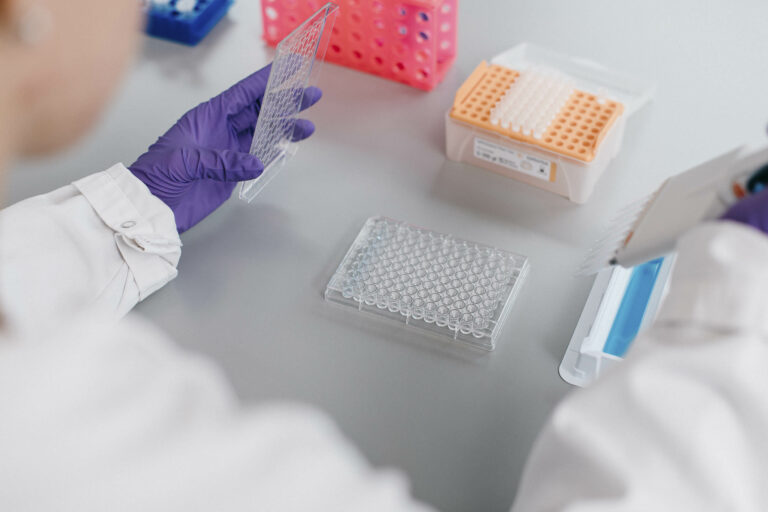Echelon Biosciences are specialized in the development of novel assays and reagents in Lipid research, with the commitment to innovate and provide the best solutions for researchers. They have recently increased their product portfolio with new Hyaluronic Acid (HA) solutions from Hyalose, which we’re pleased to announce are now available in Europe through tebu-bio.
As a major component of the extracellular matrix of connective tissue, Hyaluronic acid (HA) is a high molecular weight anionic polysaccharide (1,000-10,000 kD) composed of repeating disaccharides. Degradated and recycled by the liver, data also shows that HA is involved in many disorders such as hepatitis B or C, Liver Fibrosis and many others.
Most commercial HA is polydispersed (Fig.1) and contains residue and detrimental factors from pathogens. Based on a production technique using the Hyalose chemoenzymatic method, the size of the Select-HA™ produced is tightly controlled (Fig.1), compared to other commercial HAs (polydispersity close to 1).
tebu-bio is the official distributor of Echelon Bioscience products for all European countries, enabling you to order the following Hyalose Select-Hyaluronic Acid™ products directly on our web site.
Select-HA™

Select-HA™ is a hyaluronic acid (HA) preparation of uniform and narrow size distribution prepared by in-vitro synthesis using recombinant Pasteurella multocida hyaluronan synthase1. Commercial HA is often purified from natural sources and therefore contains a mixture of various sizes HA (fig. 1). The enzymatic quasi-monodisperse method used in Select-HA™ production allows tight control of the HA size. With low endotoxin levels (<0.1 EU/mg), Select-HA™ is even suitable for cell culture experiments.
Various size of Select-HA™ are available:
Biotinylated Select-HA™
Biotinylated Select-HA™ is the biotin version of the Select-HA™ which allows the researcher to immobilize or detect the Select-HA™ through the avidin-biotin interactions.
A single biotin is conjugated at the reducing-end of each Select-HA™ molecule which results in a more homogeneous conjugate compared with biotinylation of the HA carboxyl groups which is variable in both loading and conjugate locations. In addition, the reducing-end conjugation provides advantage over the HA carboxyl group biotinylation by not masking the HA functional groups and allowing access to the entire HA polymers.
Size of 50 kDa, 250 kDa, 500 kDa and 1000 kDa are available for the Biotinylated Select-HA™ products.
nanoHA™
nanoHA™ is a HA oligomer prepared by chemoenzymatic synthesis with immobilized enzyme reactors2. The reducing-end is N-acetylglucosamine. nanoHA™ allows researcher to study the minimal HA disaccharides units that are needed for its potential binding partners.
Select-HA™ Ladder

Select-HA™ Ladder contains five different molecular weights of Select-HA™ that can be used as size markers for agarose gel determination of HA sizes in samples. The Select-HA™ LoLadder contains HA markers range from 30 kDa to 500 kDa while the Select-HA™ HiLadder contains HA markers range from 500 kDa to 1500 kDa (fig. 2). Together, the Select-HA™ Ladder provides a quick and simple method to determine HA sizes using agarose electrophoresis.
Interested by these high quality HA products? Don’t hesitate to contact your local tebu-bio office for more information.
You might also like to take also a look to our easy to use and sentitive HA quantitative assay, and all other Echelon Bioscience products for Lipids and HA research.
References:
- Jing, W.; DeAngelis, P. L., Synchronized chemoenzymatic synthesis of monodisperse hyaluronan polymers. J Biol Chem 2004, 279 (40), 42345-9.
- DeAngelis, P. L.; Oatman, L. C.; Gay, D. F., Rapid chemoenzymatic synthesis of monodisperse hyaluronan oligosaccharides with immobilized enzyme reactors. J Biol Chem 2003, 278 (37), 35199-203.



